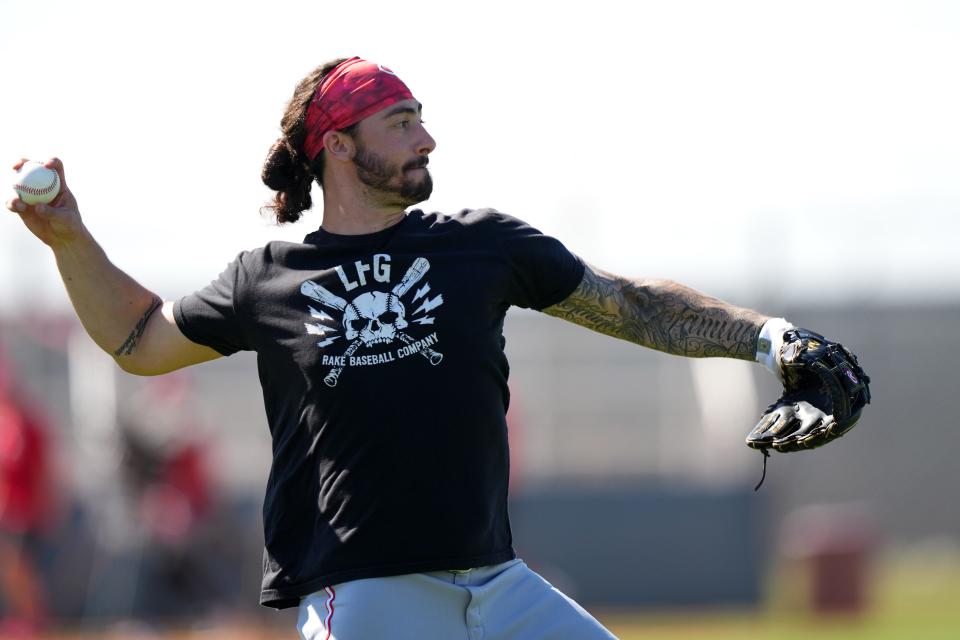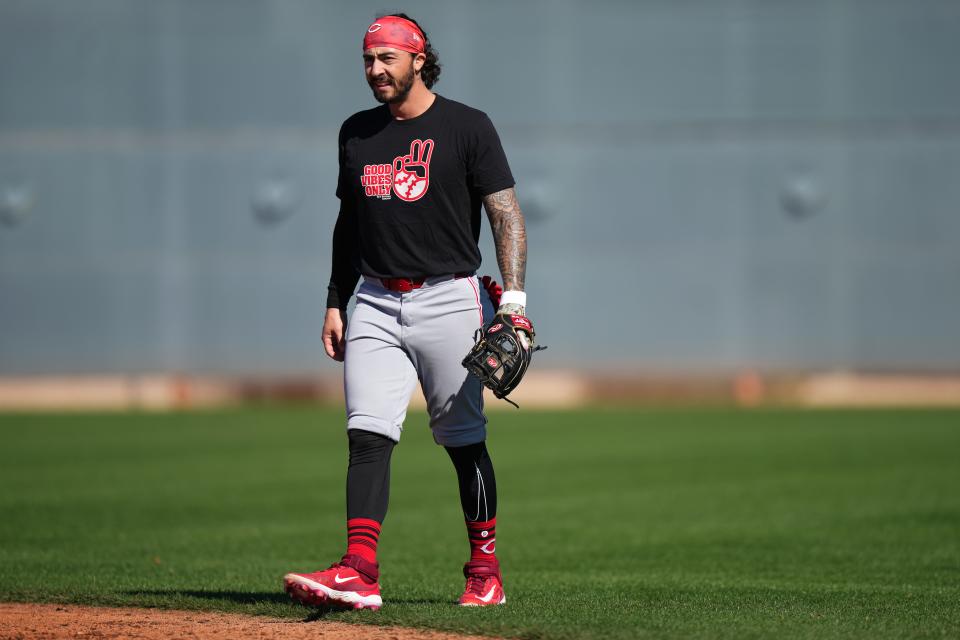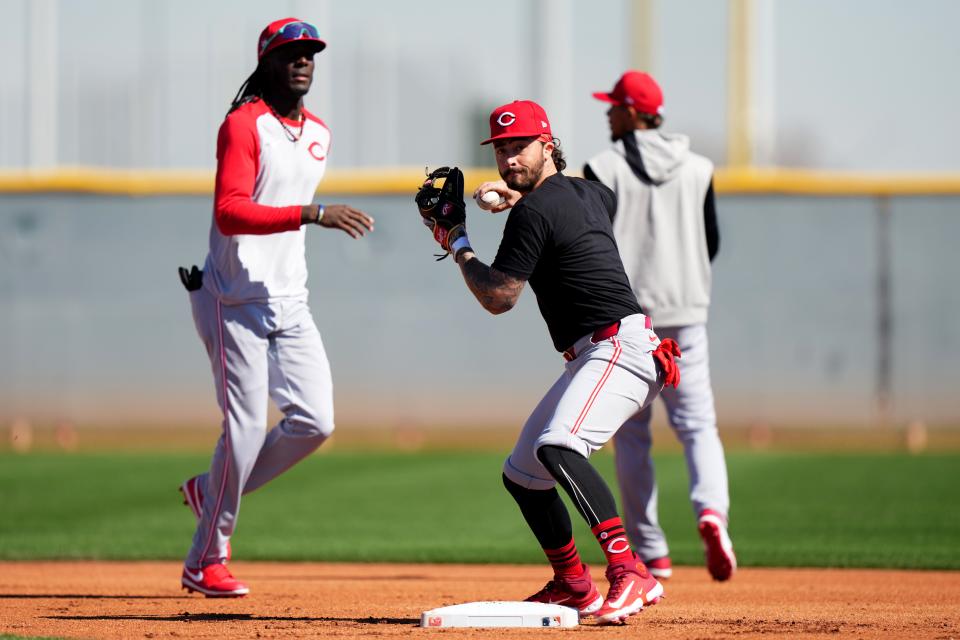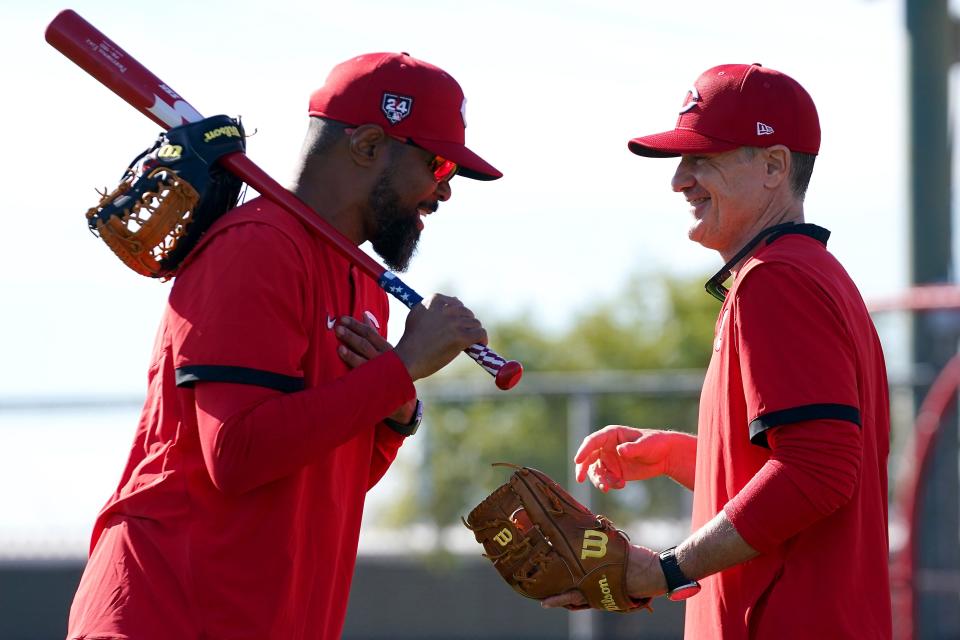Why Jonathan India’s still here and how that makes his fit the key for the Cincinnati Reds
GOODYEAR, Arizona — It might be the biggest question the Cincinnati Reds face in building their playoff plans as spring training picks up speed.
And Jonathan India doesn’t even have to hear the whole question anymore to answer (for whatever it’s worth):
Reds spring training news How Cincinnati Reds keeping 'door open' for Joey Votto when impact mentor done playing
Reds spring training Greene Cruz Cincinnati Reds' Elly De La Cruz makes spring impact – on teammate Hunter Greene's car
Reds spring training Noelvi Marte Reds third baseman Noelvi Marte's vision for the style of player he wants to become
“I don’t know.”
Nobody does. Not exactly anyway.

“They said I’ll play everyday,” India said with an implied shrug.
But where? How many positions? Left field? Second base? Third? First? Designated hitter?
Yes.
And that makes India’s fit both the key variable of an Einstein-level math problem for the roster and maybe even the key to the whole competitive thing for the Reds this season.
That last part is why he’s still here. The 2021 Rookie of the Year is one of the few credentialed, seasoned holdovers from last year’s talented but extremely young core — a hitter who provides a reliable baseline of production in the top part of the lineup and a teammate who provides an important example and tone for a bunch of guys who only reached the big leagues last year.

Those 2023 rookies have potential ceilings higher than any cluster of young big-league hitters this side of Baltimore. But the inherent volatility of youth makes the stability of guys like India and newcomer Jeimer Candelario especially important for a team that — unlike last year — has a playoff run built into every part of its 2024 planning.
That’s why team president Nick Krall said from the outset of the winter that he planned to keep India — and told India as much personally in a meeting during Redsfest — despite a long line of teams showing interest after doing their own Reds roster math.
Reds spring training injuries Matt McLain will be watching his oblique closely, but he's not concerned
Reds spring training pitching Why splitters are 'all the rage' at Cincinnati Reds spring training
Reds spring training starting rotation The race to 1,458 innings: The Cincinnati Reds' pitching plan for 2024
“I thought for sure I was going to get traded this offseason,” India said.
That might have been the last time he felt sure of anything.
“We have so many talented players on this team, you could fill two teams,” he said.
And that was before the club signed two-time All-Star veteran Josh Harrison — another second baseman with versatility — to compete for a roster spot that doesn’t seem to exist.

“You know what, I’m not really worried about it,” India said. “I’m happy this team is this talented and skilled. It’s a good recipe to have.”
Maybe that speaks to the “peace” India found amid all those trade rumors and common ground carved out with the front office — not to mention the two-year, $8.8 million deal they struck to avoid an arbitration hearing.
It doesn’t make the roster math any easier to understand.
Even if the indications were on the horizon as far back as last summer when India was asked to start working on learning how to play outfield for the first time in his life.
He pushed back on making such a big, midstream change during an increasingly competitive season, but started working with former teammate Nick Castellanos in Florida during the offseason. And he’s carried that into drills with coach Collin Cowgill this spring.
It remains very much a work in progress a week into camp.
But no more so than the playing time math that still seems to put his immediate fit — if not his long-term status — in question.
When his agent told him this winter that “everyone wants you; just the Reds aren’t giving you up,” India reacted with the obvious.
“I would always ask, ‘Why?’ “ he said. “ ‘Where am I going to play? What’s going on? How are they going to do this with all these players?’
“I finally just put my head down and started training. I stopped worrying about it.”
The conversation with Krall helped. So did getting that two-year deal done.
“But you still never know,” he said. “It’s still a business.”
That’s the thing. As much as the contract implies security, it also gives him cost-certainty value to any of those interested teams that might come calling again (never mind the year of club control beyond the guaranteed two years).
For now, he’s investing in the present, even if he occasionally wonders about the future.
That means trusting manager David Bell to make the math work on the playing time. Once all the rookies showed up last year, Bell tried to pull off a 10-man rotation designed to provide roughly a day off for each regular position player every 10 days.
Injuries quickly made the rotation unnecessary.
“I really believe that I can do my part to create that (everyday playing) experience for everyone, where everyone is contributing a lot,” Bell said this week. “If it’s not every single game, 162 games, we can make it happen.”

So he works in the outfield, sometimes wonders how often he’ll see the infield this year, holds to his identity as an infielder “through and through” and has been in the game long enough to know how often unexpected events tend to answer seemingly unanswerable questions.
In fact, as if on cue, projected Opening Day second baseman Matt McLain developed an oblique issue early in camp that has him sidelined from practice this week. McLain expects to be ready for the opener, but it’s a reminder.
“You never know how everything shakes out,” India said.
Literally nobody in this camp knows how the infield-outfield mix will play out — especially with Spencer Steer joining India as infield ex-patriots in an outfield with plenty of other good players.
“I know in my heart I’m an infielder on any other team. That’s what’s crazy,” India said. “Which is OK. This is a year I get to show my versatility. And that could help me down the road in my career.
"So it doesn’t bother me,” he said. “I’m also helping the team win. I’m being open and helping the team win this year. I look at the positive. I’m excited for the challenge.
“We’ll figure it out.”
This article originally appeared on Cincinnati Enquirer: Why Jonathan India's fit in Reds playing-time math major key to season

